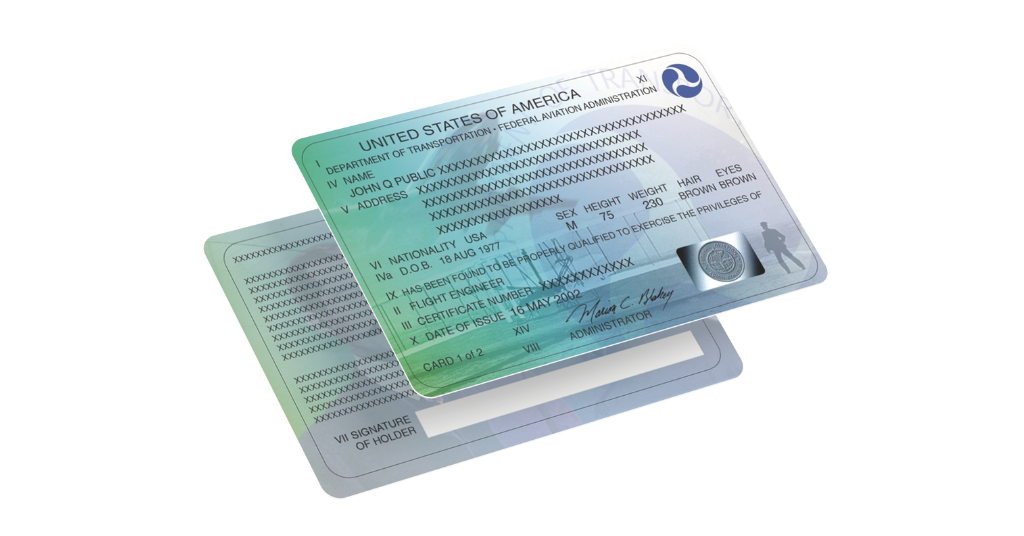When thinking about obtaining a pilot’s license, it’s easy to be confused by the terminology used. Technically, there is no such thing as a pilot’s “license.” What the FAA issues are certificates and ratings.
A pilot certificate describes the privilege level – the kind of flying the pilot is authorized to perform. It does not describe the kind of aircraft that can be flown. That comes under the term “rating.” The four main types of certificates most pilots progress through on the road to becoming airline pilots are student, private, commercial, and airline transport pilot (ATP) certifications. There are also other, less used, certificates, such as unmanned (drone), sport, and recreational.
The four main types of certificates mentioned above describe the kind of flying that can be done. The student pilot certificate allows the student to train with an instructor and then fly solo after receiving a solo endorsement. Student pilots may not carry passengers. The purpose of the certificate is to allow a student pilot to meet the requirements for obtaining a private pilot certificate, and all the flying must be done under the supervision of an instructor.
The private pilot certificate allows the holder to fly pretty much anywhere he or she wants, day or night, providing certain minimum weather conditions are met. Private pilots may carry passengers but are not allowed, under almost any condition, to charge another person for the flight. While there are many restrictions concerning flying for business, for many who only desire to fly recreationally, this is the only certificate they will need.
The commercial pilot certificate allows one to earn money as a pilot, but only in limited situations. For those who want to become airline pilots, many will also obtain a certified flight instructor certificate (not a standalone pilot certificate), which, in conjunction with their commercial pilot certificate, will allow them to earn money as a flight instructor while building time to meet the 1500-hour ATP requirement. Once the ATP is obtained, the pilot is then eligible to apply for a coveted airline job.
As for the kinds of aircraft that can be flown, every pilot certificate described above comes with at least one rating for the category and class of aircraft that is authorized. Category describes a broad type of aircraft, such as airplane, helicopter, glider, hot air balloon, etc., while class describes a subclass of the category. An airplane category can be subdivided into land or sea and single engine or multi-engine. Most pilots start with a category and class rating to fly a single engine land airplane. They may then add additional ratings, such as multi-engine land, as they progress in their training.
Aircraft that weigh over 12,500 pounds, and all turbojet aircraft, require a type rating. Type ratings can be complicated, but they are specific to a particular aircraft, such as a Boeing 737 or a Cessna Citation CE-550.
Another very important rating, that is not only highly useful but necessary in many situations, is the instrument rating. This rating is most often earned after the private pilot certificate. The instrument rating is added to the pilot certificate and allows the pilot to fly in weather below that needed for visual flying. Even if a person only wants to fly recreationally, an instrument rating is highly recommended and can be a lifesaver if the weather unexpectedly deteriorates.
So, what does all this mean for someone starting out in flight training? First, it outlines the course of instruction that should be followed to earn the desired pilot privileges. Next, it allows a company like American Flyers to put together an estimate of the time and financial commitment needed to reach that goal. For such an estimate, please contact the location most convenient for you.










